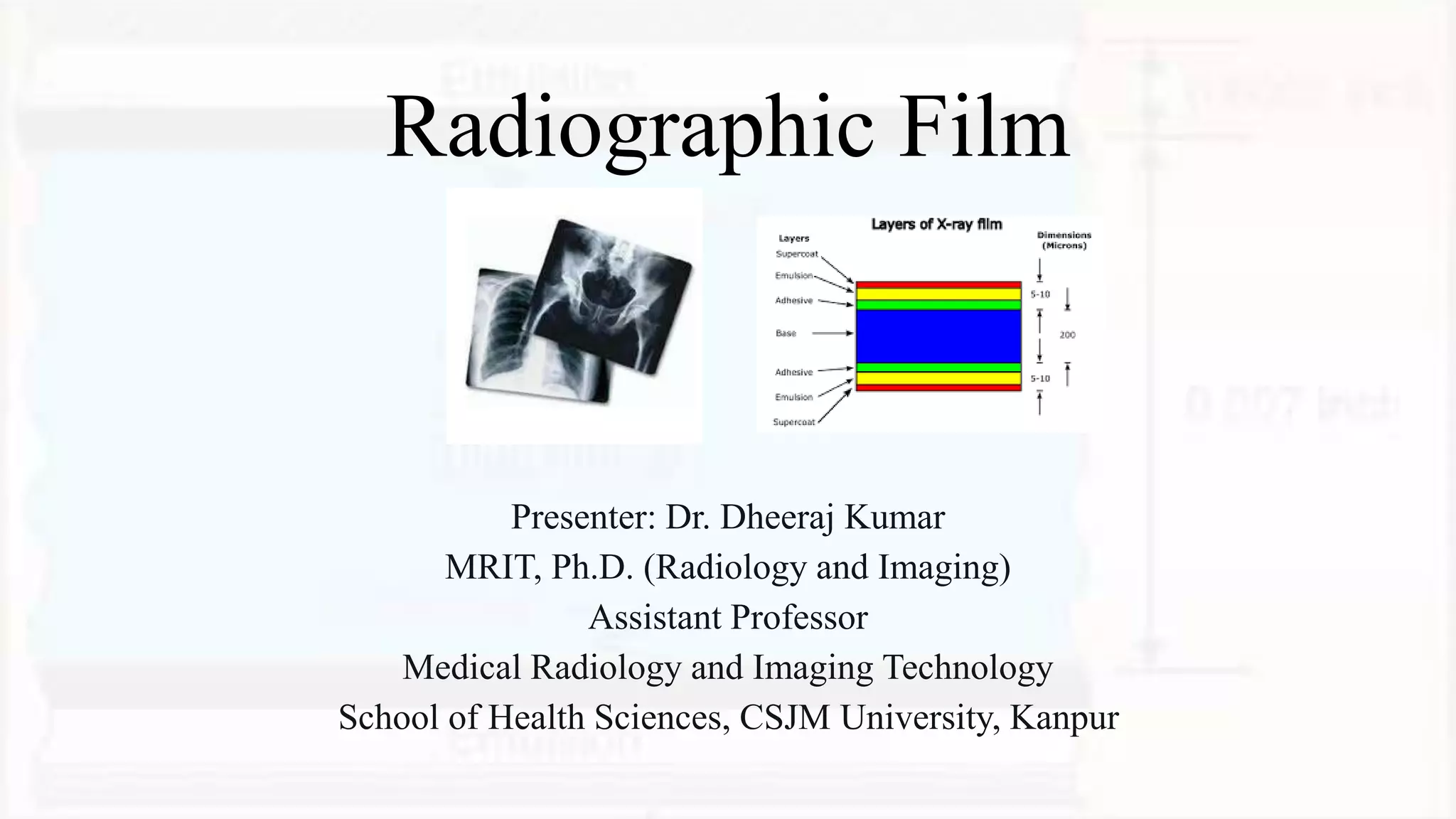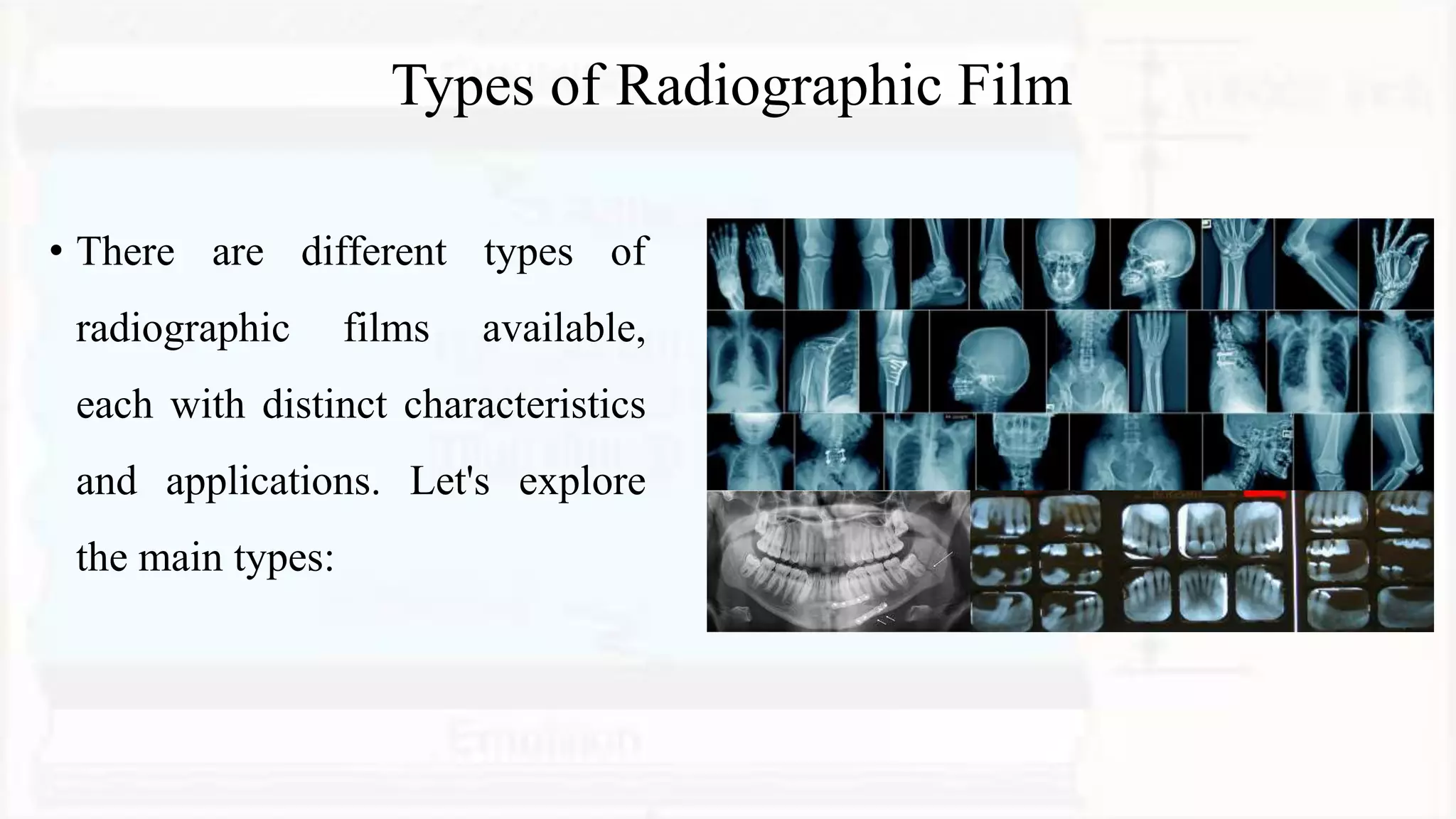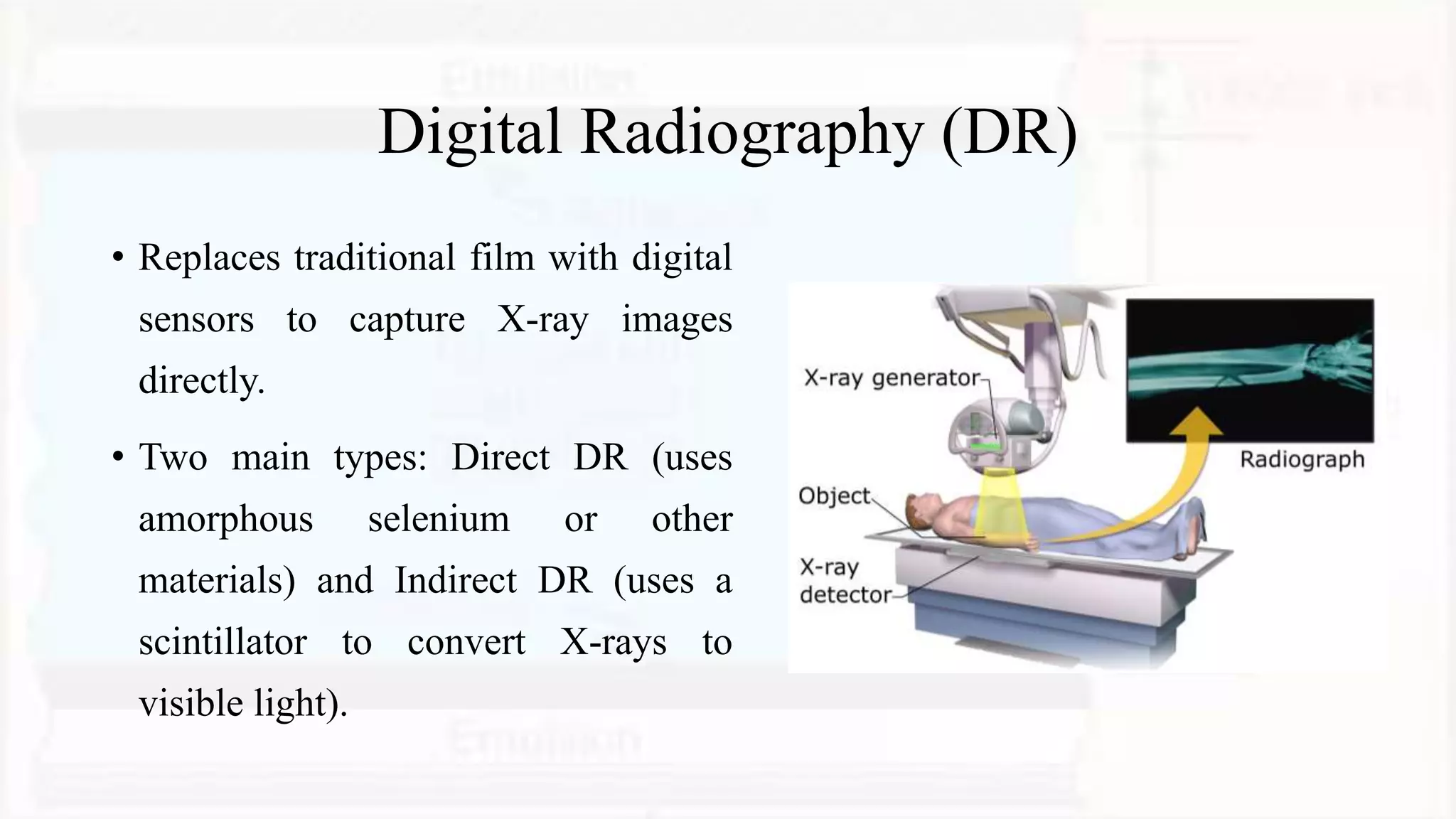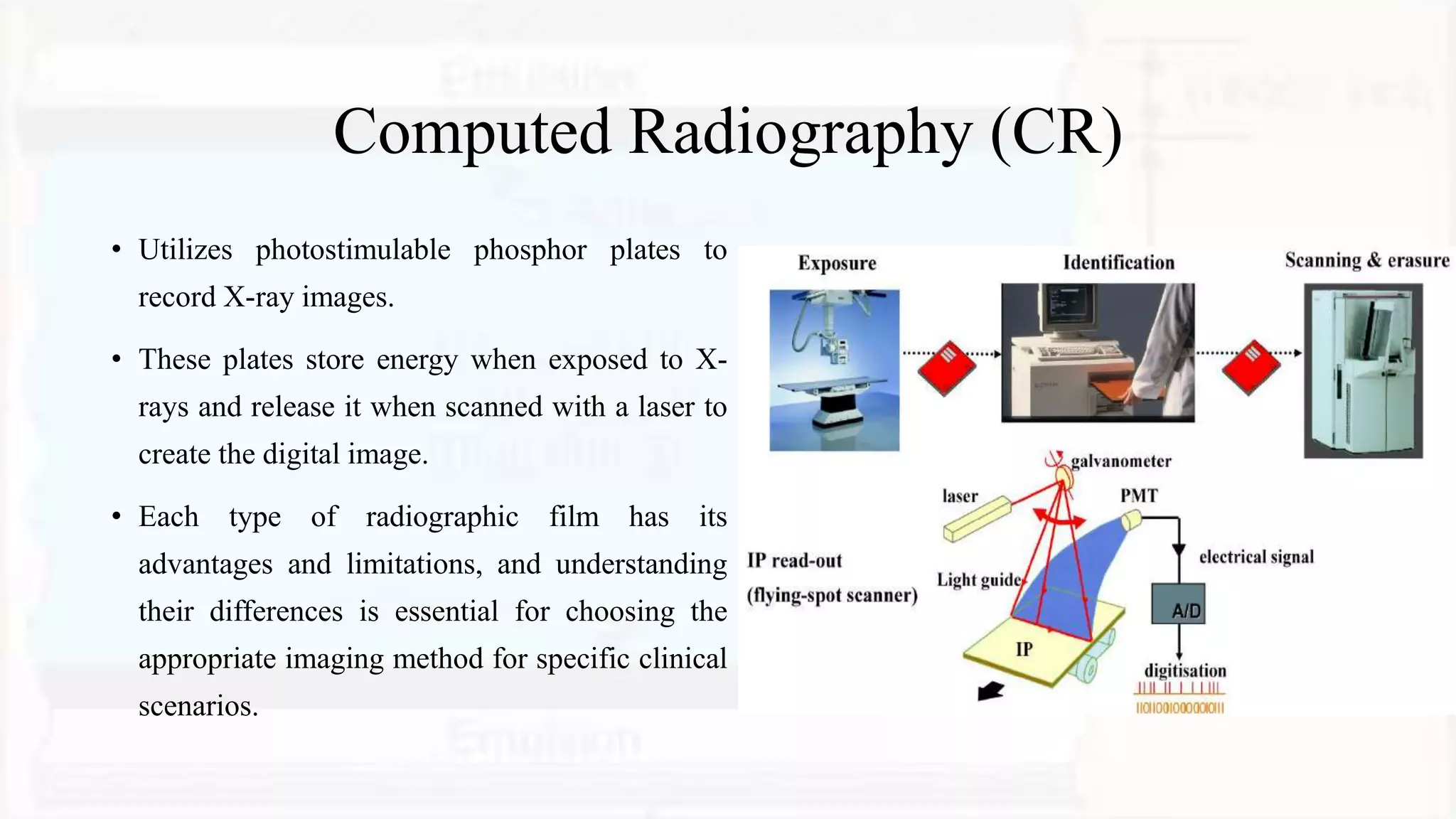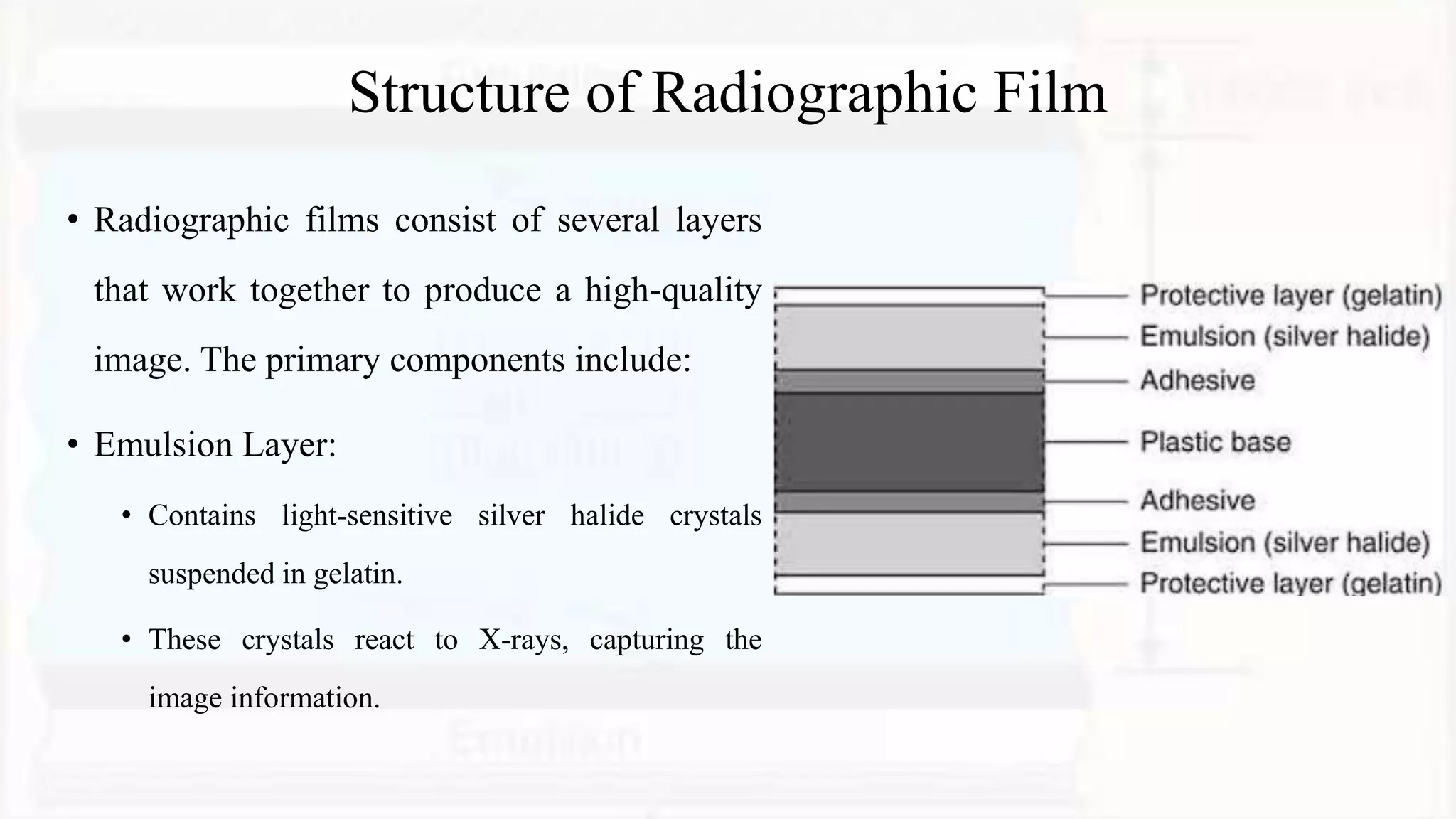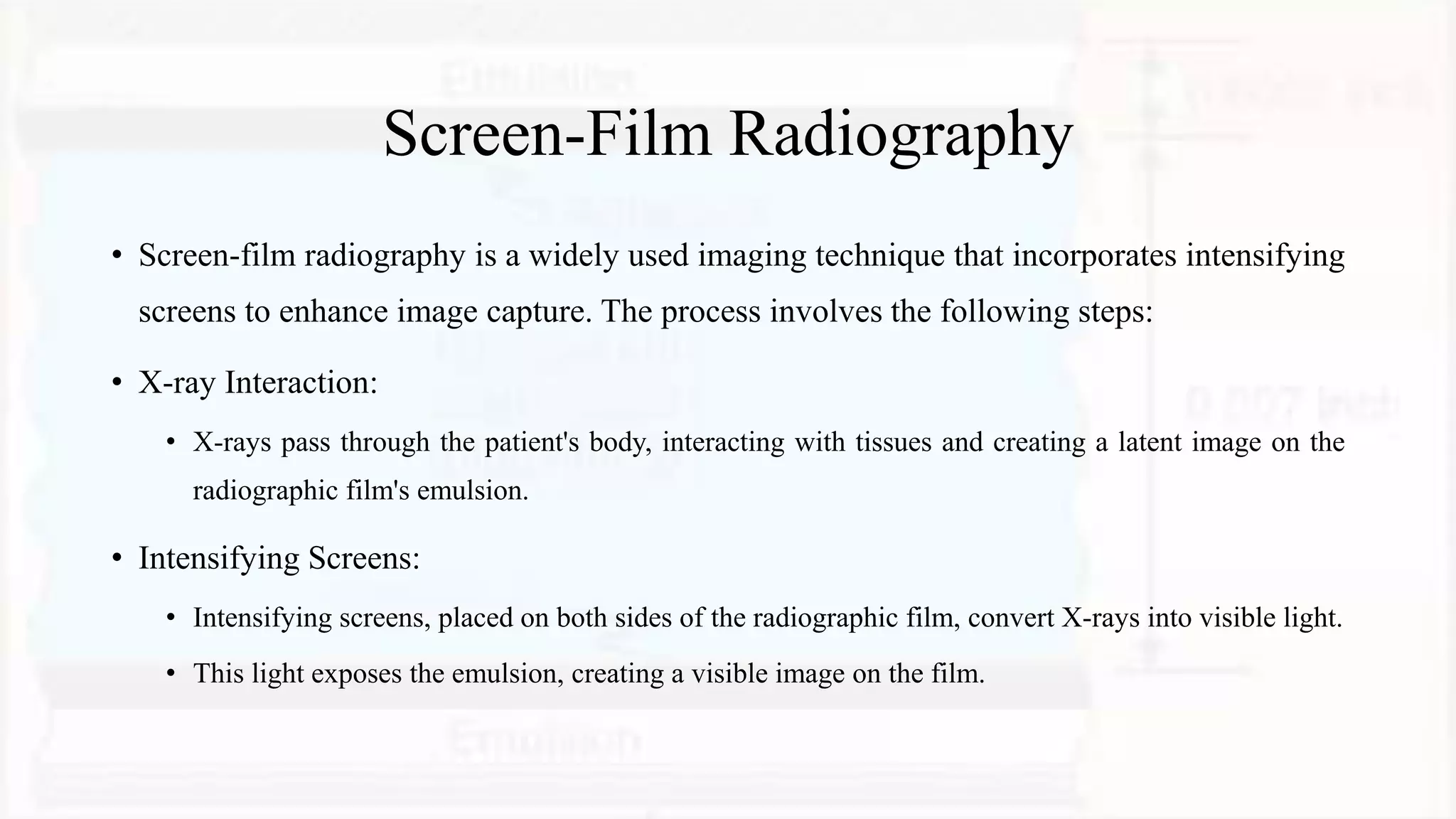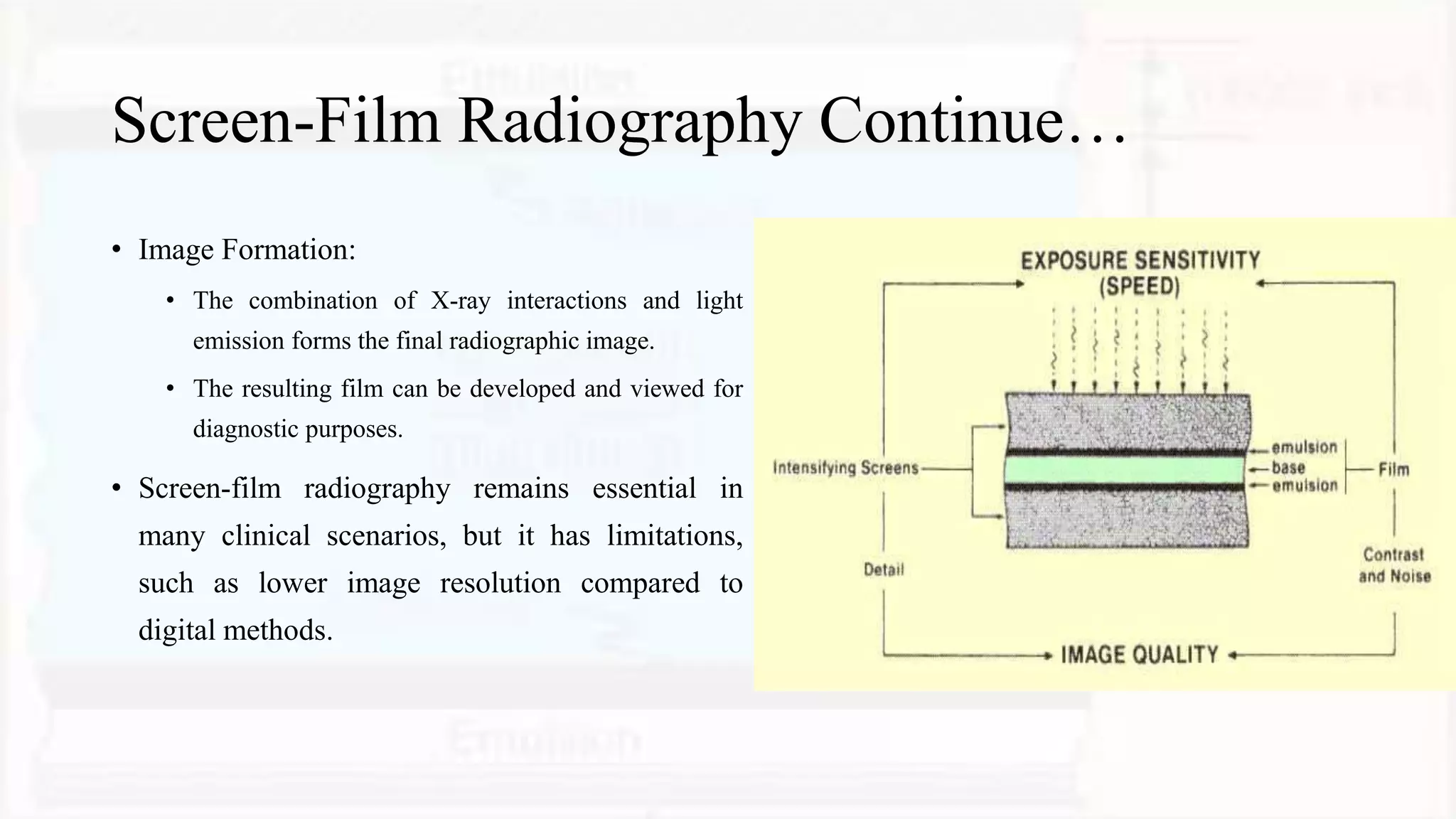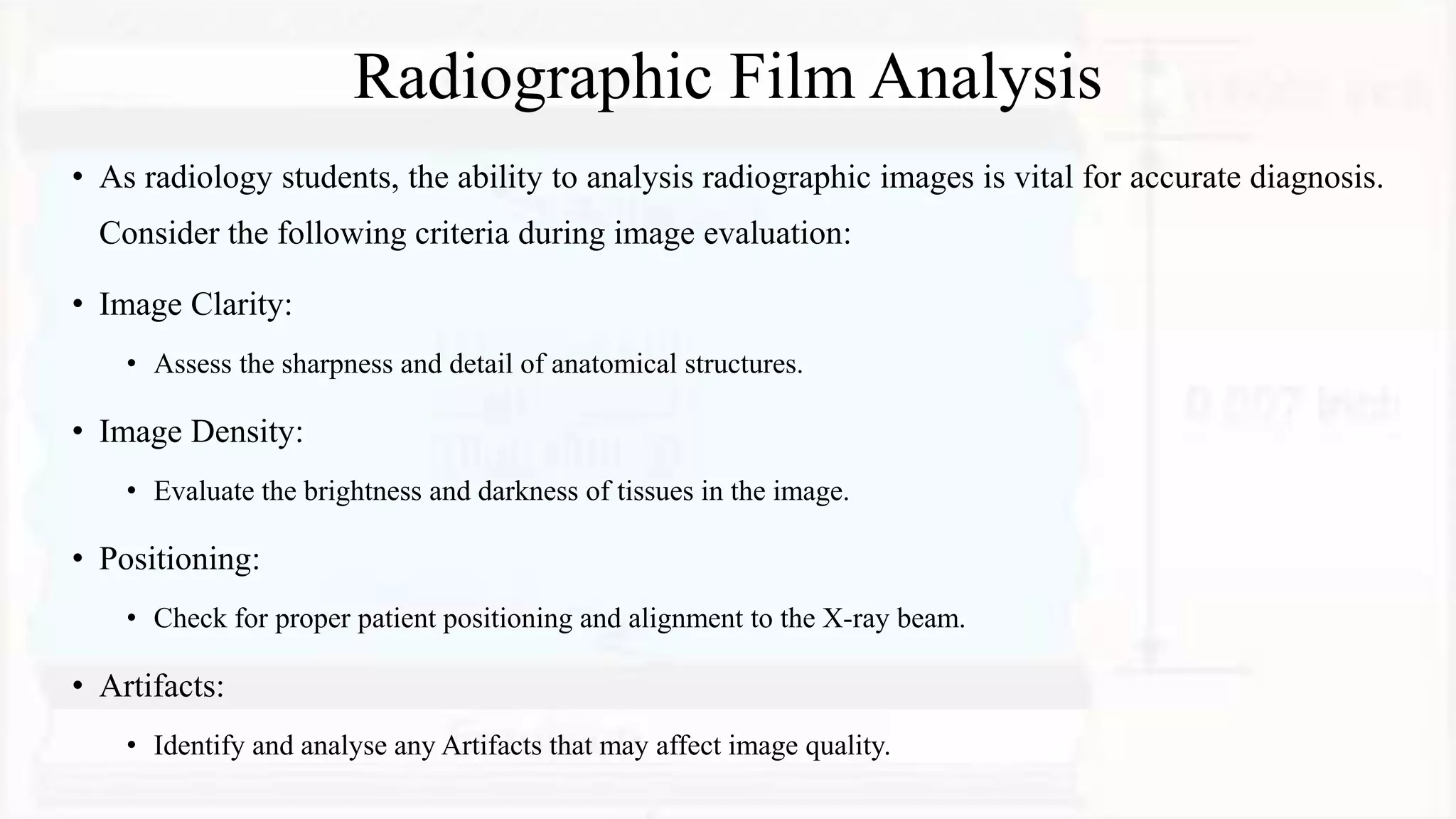The document provides a comprehensive overview of radiographic film, including its history, types, structure, and the transition to digital imaging technologies. It highlights the development and evolution of film in medical imaging since the discovery of x-rays in 1895, detailing various advancements such as single and double-emulsion films, as well as computed and digital radiography systems. The text emphasizes the importance of understanding radiographic film's characteristics and the need for proper handling and storage to maintain image quality, while also discussing future trends in the field.
